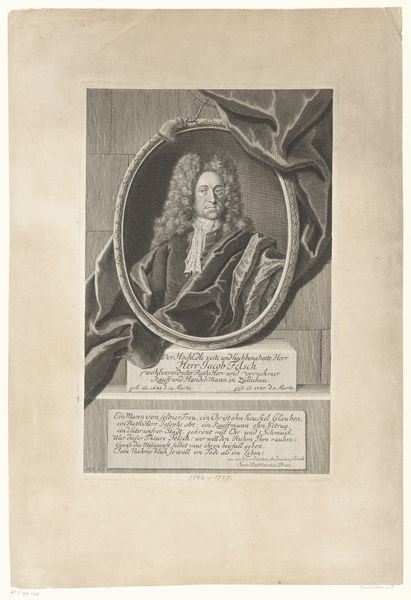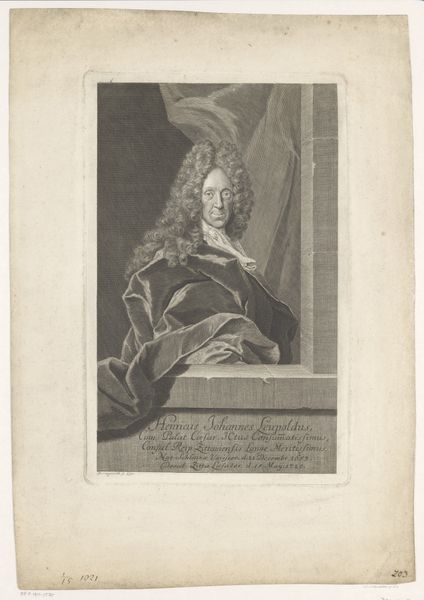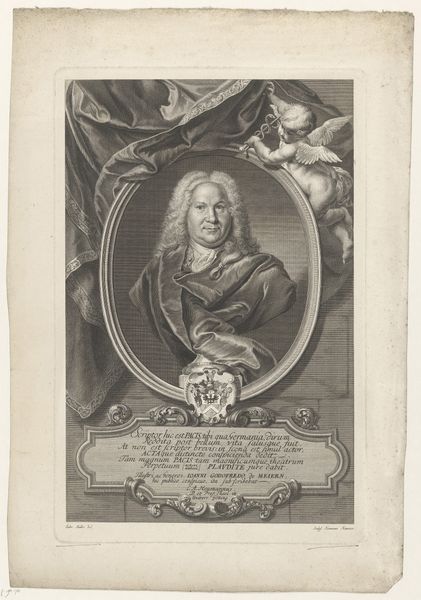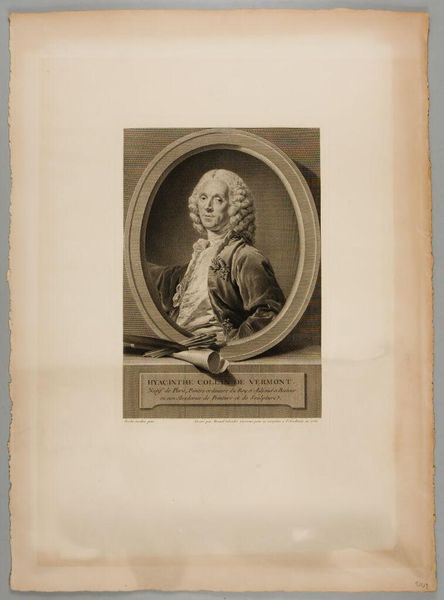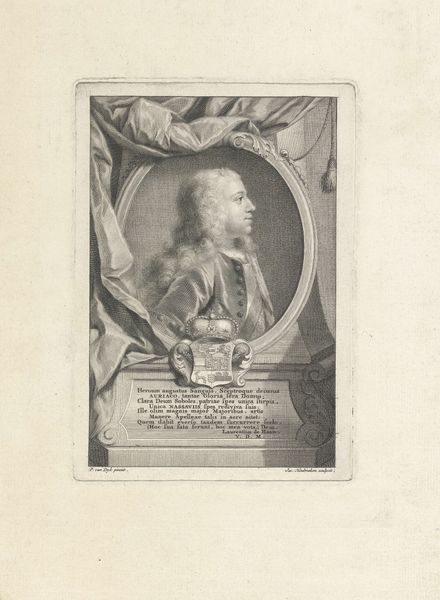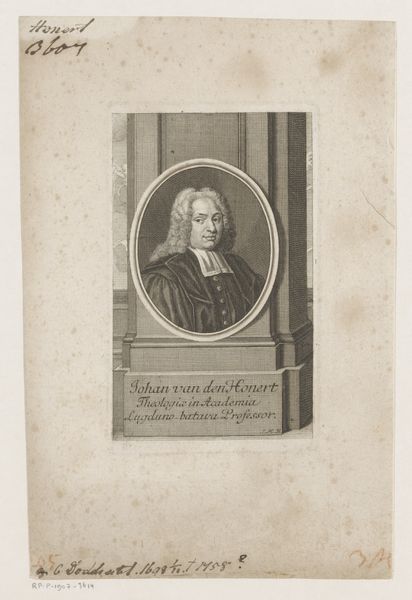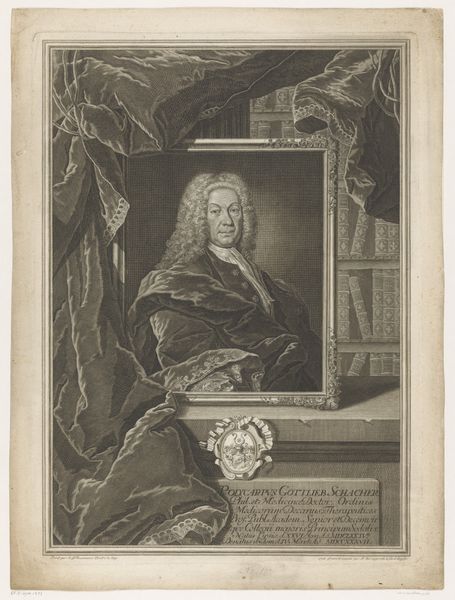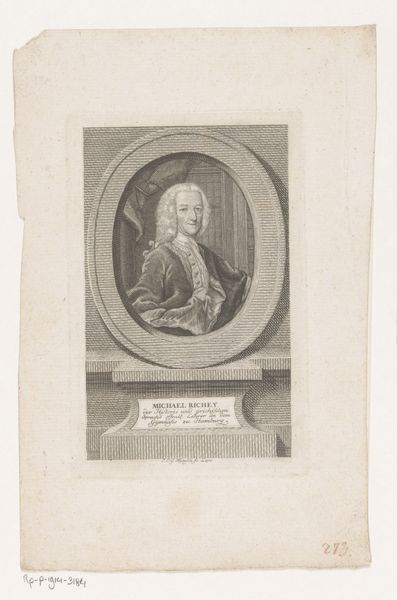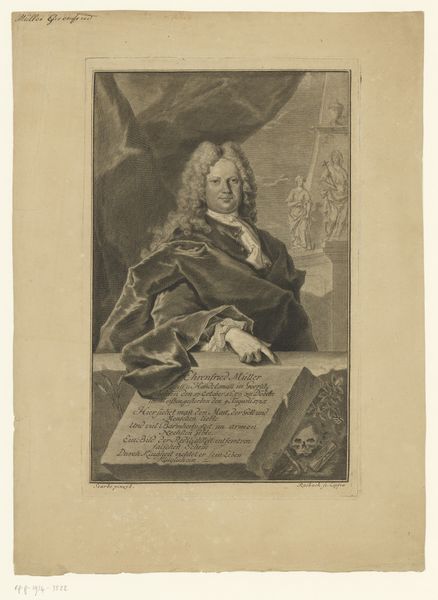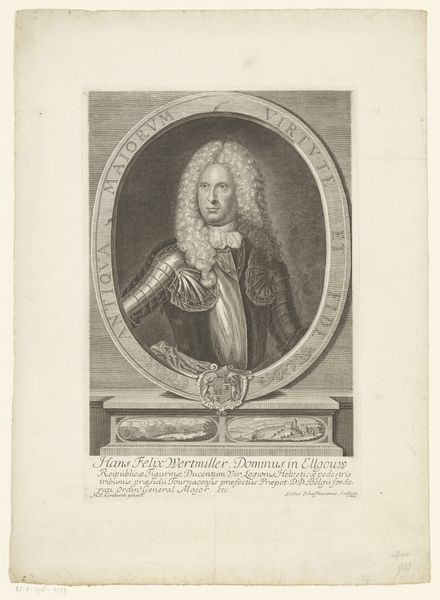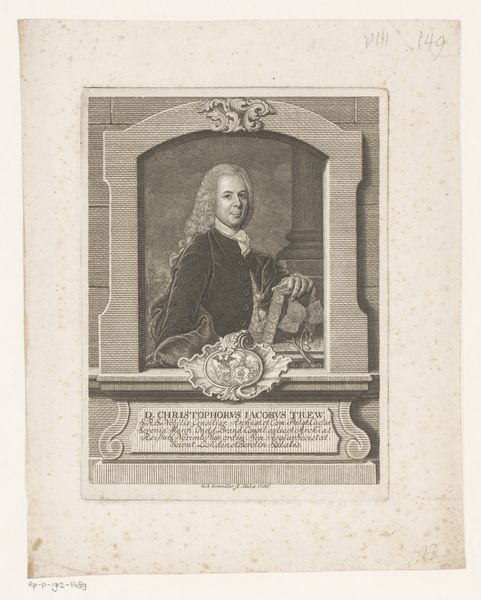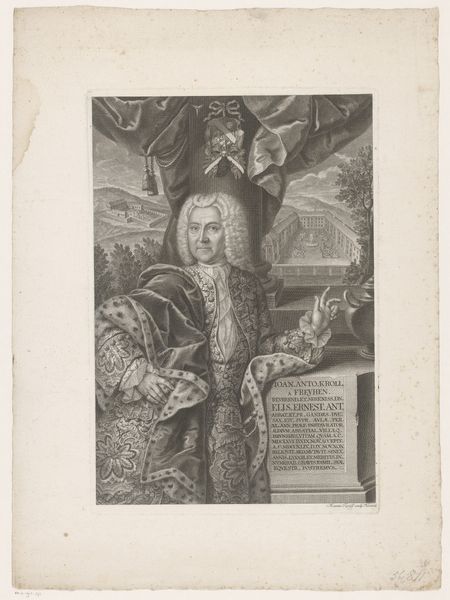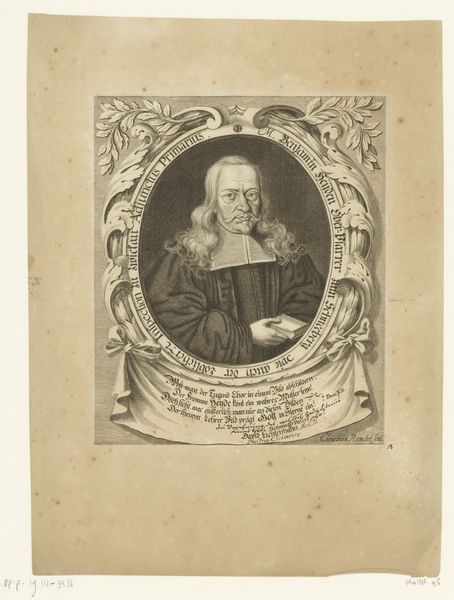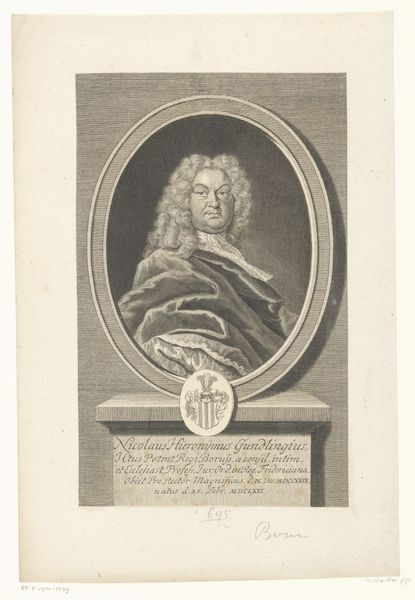
metal, engraving
#
portrait
#
baroque
#
metal
#
old engraving style
#
history-painting
#
engraving
Dimensions: height 335 mm, width 220 mm
Copyright: Rijks Museum: Open Domain
Editor: So, this engraving from between 1729 and 1733 is titled "Portret van Heinrich Friedrich Walther," created by Martin Bernigeroth. It feels quite formal, almost like a stage production with the drapery and the oval frame. What stories do you see in this piece, framed as it is by its own time and ours? Curator: It's crucial to consider the social function of portraiture during the Baroque period. This isn’t simply an image; it's a statement about status, power, and legacy. How does the visual language – the pose, the clothing, the framing – contribute to this declaration? Do you think this portrait was meant for public display? Editor: Absolutely! The formality practically demands to be seen. The Latin inscription further elevates him, placing him within a historical and intellectual tradition. I’m wondering how accurate a portrayal it would have been though, or rather how idealized. Curator: The "accuracy" is less about a true likeness and more about constructing a desired image. Consider the institutional forces at play. Who commissioned this portrait, and what message were they hoping to convey about Walther and themselves? The choice of engraving, a reproducible medium, speaks volumes about dissemination and public image. How might the subject have wished to be seen by his contemporaries versus future generations? Editor: So, the context defines its purpose. It’s about controlling the narrative, shaping public perception in a deliberate and lasting way. Seeing it like that, even the baroque style itself takes on new weight. Curator: Precisely. And thinking about this now, we must consider how the Rijksmuseum, as an institution, participates in shaping Walther’s continued legacy. The portrait now has its own historical significance shaped by our present understanding. Editor: That gives me a lot to think about – it is both a preserved history, and always recontextualized.
Comments
No comments
Be the first to comment and join the conversation on the ultimate creative platform.
